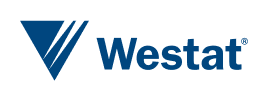This website uses cookies so that we can provide you with the best user experience possible. Cookie information is stored in your browser and performs functions such as recognizing you when you return to our website and helping our team to understand which sections of the website you find most interesting and useful.
Does a 2nd review of school meal applications reduce errors?
Performing an independent review of school meal applications

Challenge
Every year, local education agencies (LEAs) review the information provided by households on school meal applications and determine whether the students in the household are eligible to receive free, reduced-price, or paid school meals.
The Healthy, Hunger-Free Kids Act of 2010 (HHFKA) added a provision that requires certain LEAs to conduct a 2nd, independent review of applications (IRA) of those school meal applications to verify that the correct determination has been reached.
The IRA process was first implemented in school year 2014-15. Data from the first 2 years that the IRA process was in place showed that few errors were caught during the 2nd review, which was unexpected.
For the U.S. Department of Agriculture’s (USDA’s) Food and Nutrition Service (FNS), Westat conducted the Independent Review of Applications (IRA) Study to understand the IRA process and whether it is effective at identifying and correcting errors.
Solution
The study included both a process and an outcomes assessment.
The process assessment examined how all state agencies and 30 LEAs implement the IRA requirement. The outcomes assessment involved collecting household application data and assessing eligibility for each application, and then comparing the study team’s eligibility determinations to the LEAs’ determinations.
Taken together, the process and outcomes assessments describe the IRA process, provide insight into the types and causes of errors, and offer recommendations to improve the process.
The study also involved multimode data collection, including an online survey, telephone interviews, and abstraction of households’ paper and electronic applications for school meals.
Results
LEAs usually classify student eligibility for school meals correctly; less than 5% of applications were classified in error.
LEAs report that the 2 biggest challenges with the IRA process are:
- Receiving incomplete/illegible applications from households
- Having available staff to conduct a 2nd review of applications
States perceive that LEAs of all sizes struggle to complete the IRA process within the required 10-day timeframe.
See the FNS website for the full report: Evaluation of the Independent Review of Applications in USDA Child Nutrition Programs.
-
Perspective
Teacher Apprenticeships Strengthen the WorkforceJuly 2024
Many state education agencies (SEAs) are addressing teacher shortages by creating and expanding alternative paths to the teaching profession. One fast-growing option is teacher apprenticeships,…
-
Expert Interview
Passport to Careers: Aiding Foster and Homeless Young AdultsJuly 2024
The Passport to Careers program in Washington State supports former foster youth and homeless youth unaccompanied by a parent or guardian in achieving their college…
-
Perspective
Highlights of Westat at AAPOR 2024May 2024
We’ve returned from the 79th Annual American Association for Public Opinion Research (AAPOR) Conference, held May 15-17 in Atlanta, where we caught up with colleagues…




